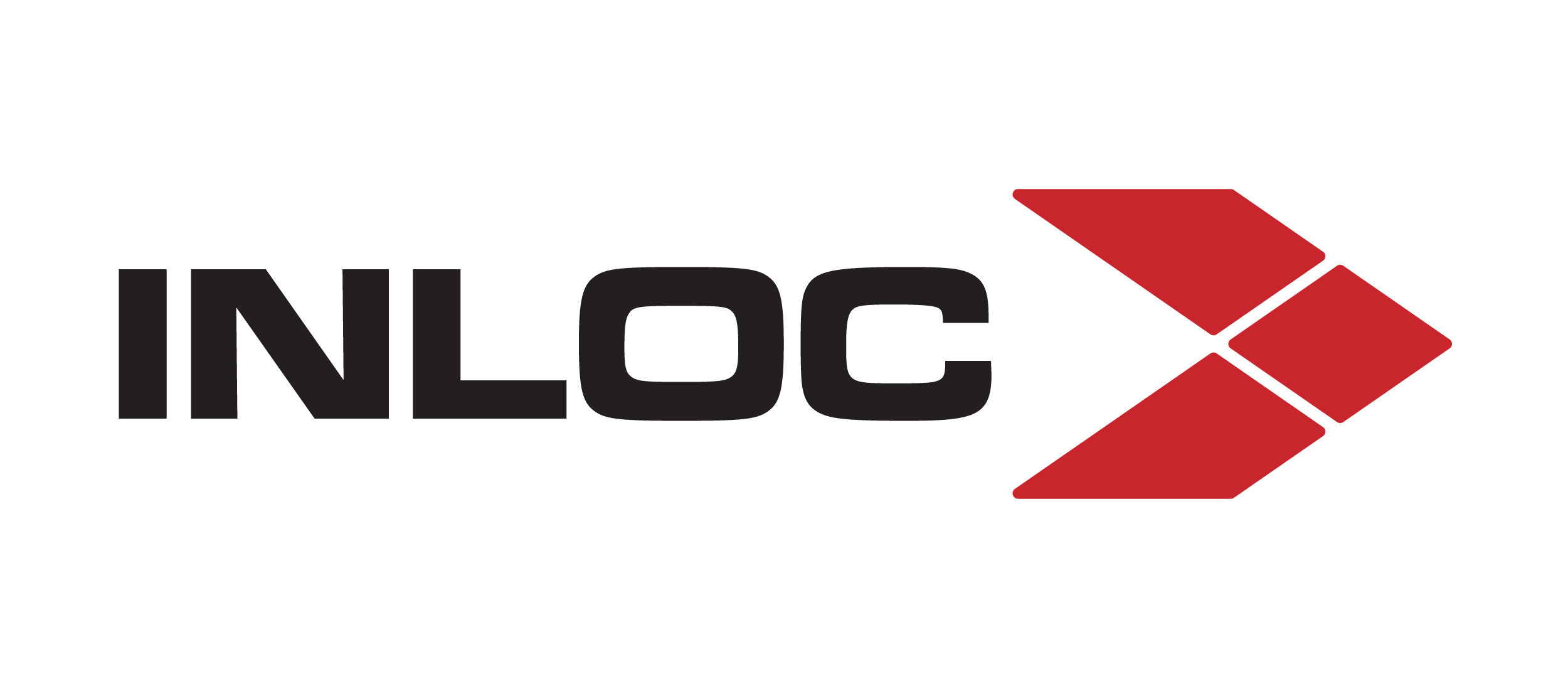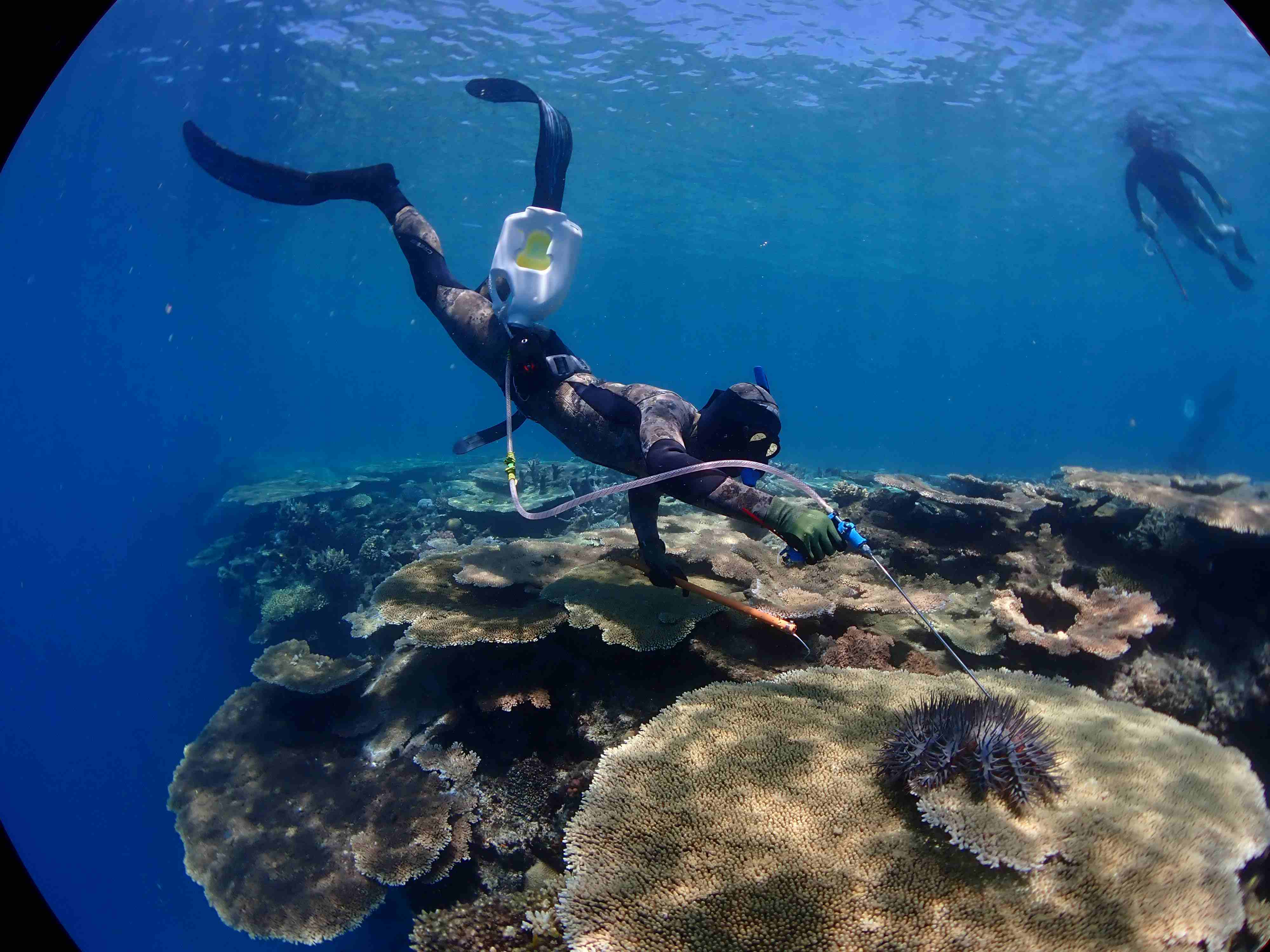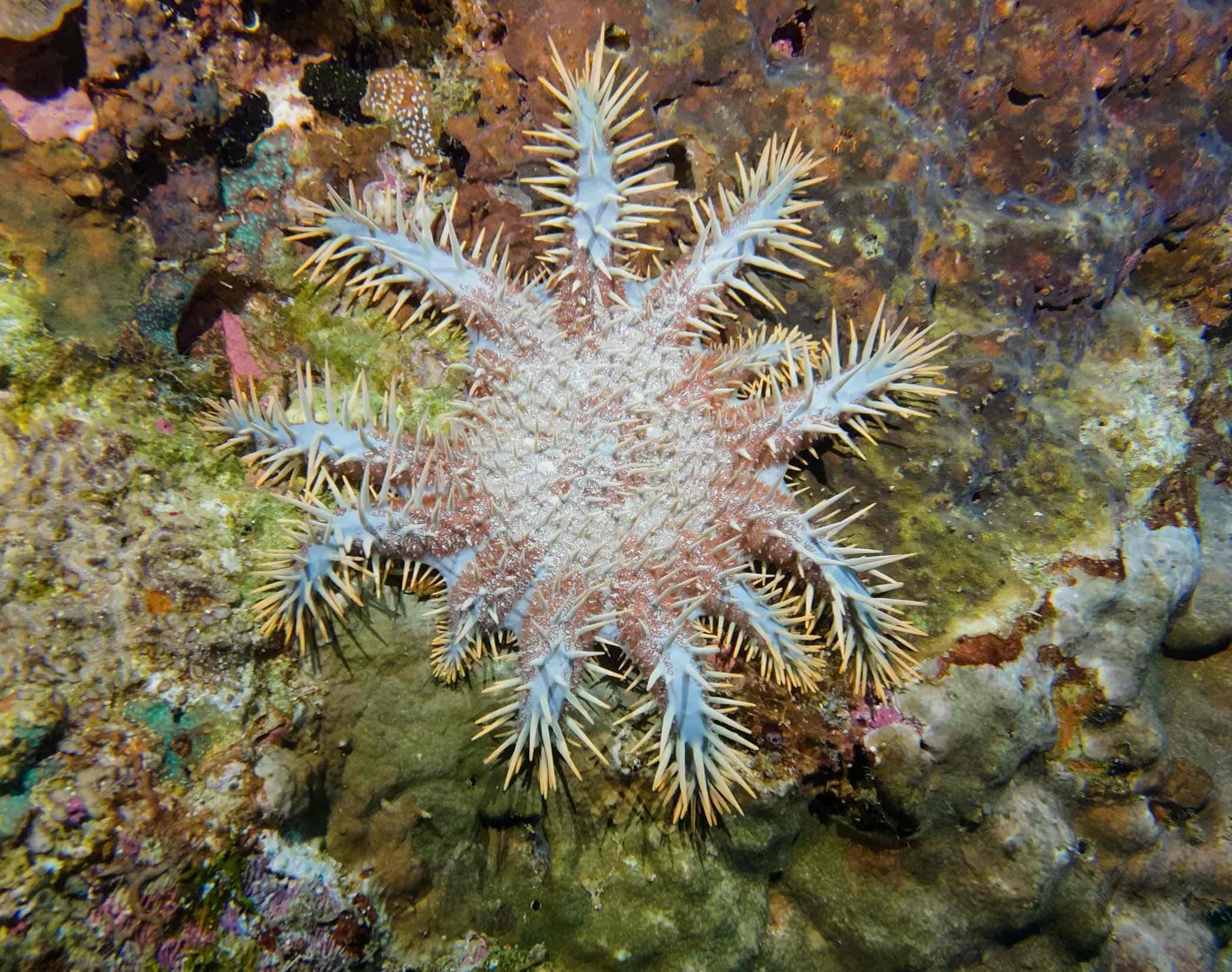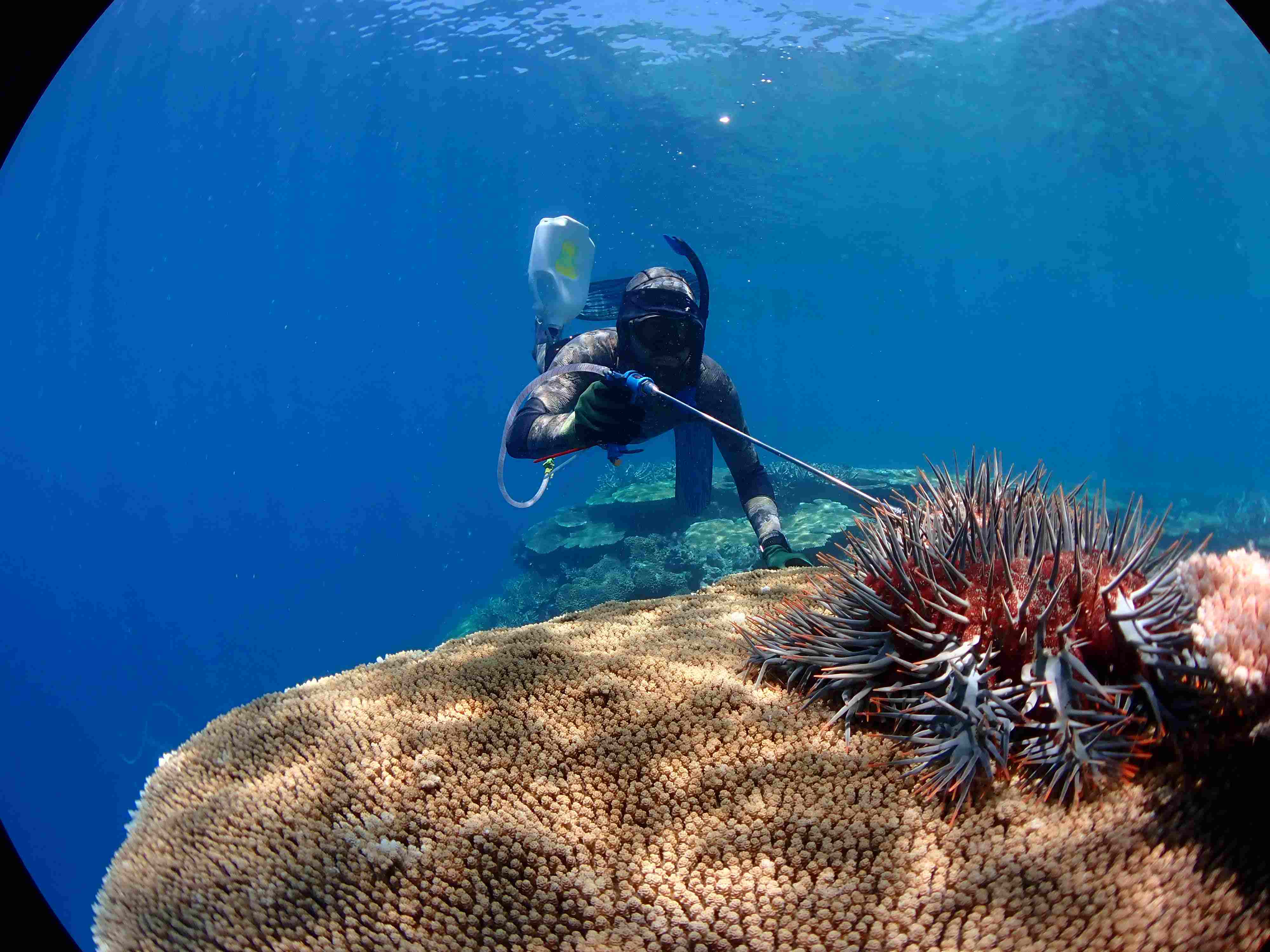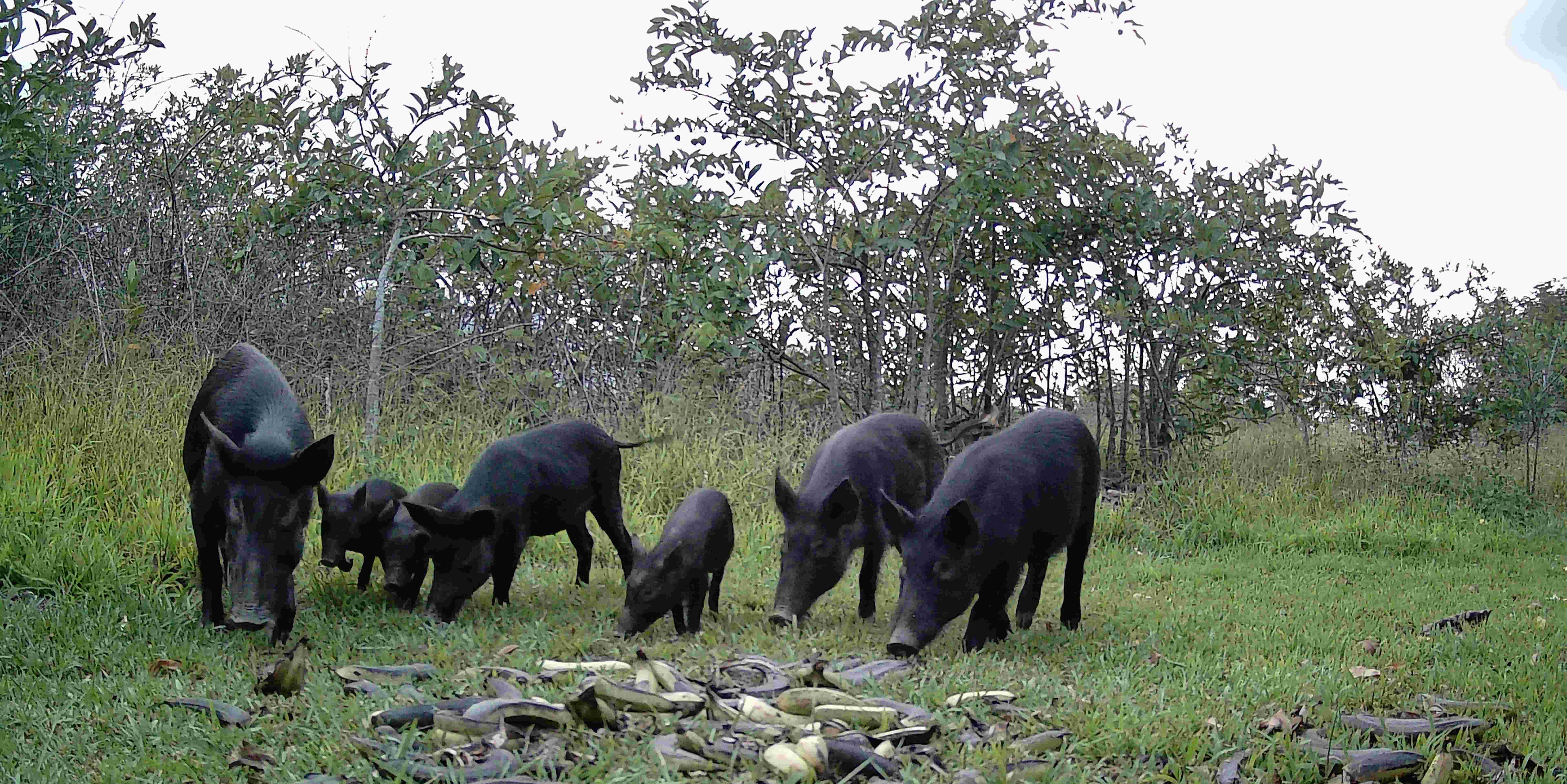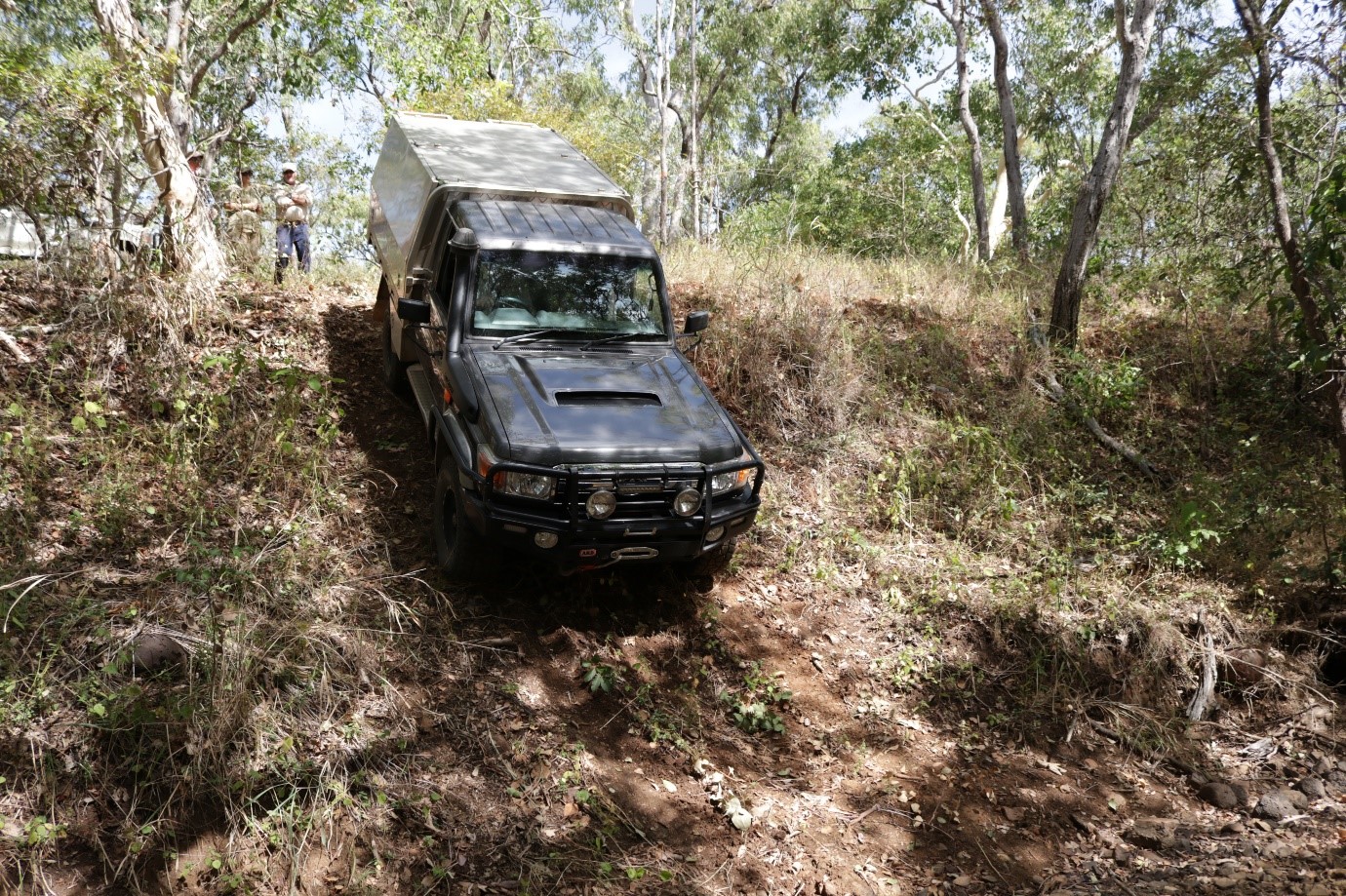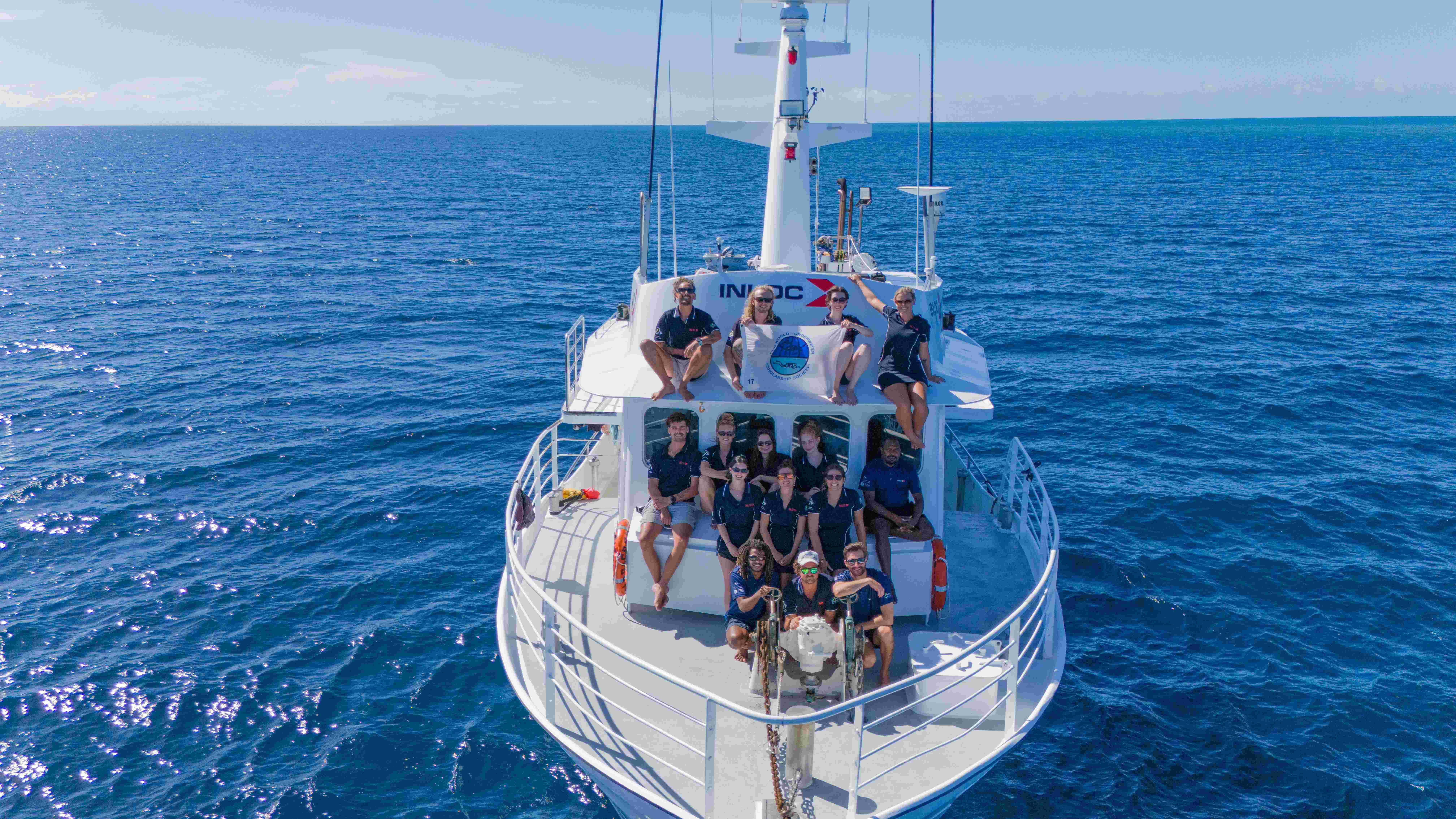The Great Barrier Reef, an expansive ecosystem comprising over 3,000 reefs across 344,000 square kilometres of marine park and renowned for its immense biodiversity and awe-inspiring beauty, faces an ongoing ecological threat: the Crown-of-Thorns Starfish (COTS). These coral-eating predators, if left unchecked, can devastate vast sections of coral, compromising the reef’s health and resilience.
INLOC is proud to play a key role in safeguarding the Reef working in alignment with the Crown-of-Thorns Starfish Strategic Management Framework, which is led by the Great Barrier Reef Marine Park Authority (the Reef Authority). This framework serves as a tactical guide for achieving the management targets set forth in the Reef 2050 Long-Term Sustainability Plan and the Great Barrier Reef Blueprint for Resilience. By applying the best-available science and a coordinated, adaptive response, we are helping to secure a healthier future for this irreplaceable ecosystem.
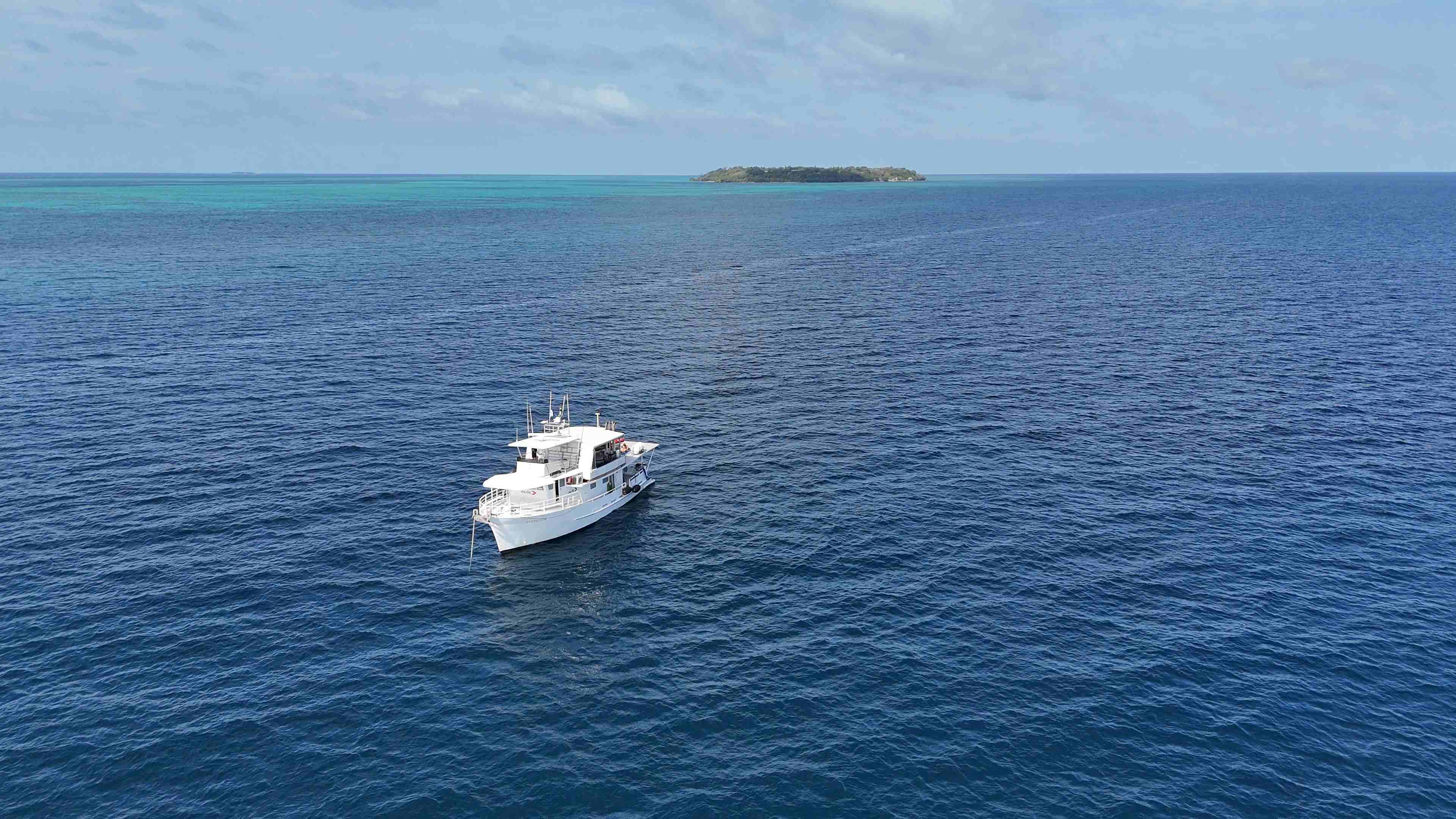
Understanding the Crown-of-Thorns Starfish (COTS)
The Crown-of-Thorns Starfish (COTS) is one of the greatest threats to coral ecosystems in the Great Barrier Reef. Although they naturally occur in the Indo-Pacific region, including the reef, various environmental factors—such as increased water temperatures, nutrient runoff, and reduced predation—have led to severe population outbreaks. These outbreaks pose a significant risk to coral health, as each starfish can consume large amounts of coral tissue, potentially reducing coral cover by up to 40% in affected areas.
Coral loss on this scale is catastrophic for the reef’s biodiversity. Healthy coral is vital for providing shelter and food to countless marine species. It also plays a critical role in protecting the reef from other environmental pressures, including climate change, ocean acidification, and coral bleaching.
COTS are easily recognised by their spiny, thorn-covered appearance. Scientists have identified four species globally: Acanthaster planci and A. mauritiensis in the Indian Ocean, an unnamed Red Sea species, and A. cf. solaris, which is the most common on the Great Barrier Reef. These starfish are the second-largest starfish in the world, growing up to one metre across and possessing up to 21 arms.
COTS are also known for their surprising speed. Capable of moving up to 20 metres per hour, they are the fastest starfish species. Their mobility, combined with their ability to reproduce rapidly under favourable conditions, makes managing outbreaks essential to safeguarding the reef’s long-term health.
The Importance of Controlling COTS Populations
Effective COTS control is crucial for preserving the reef’s resilience and biodiversity. Without intervention, COTS outbreaks could cause widespread damage, stifling the coral’s ability to regenerate.
By improving coral health, the program strengthens the reef’s ability to withstand other environmental pressures. According to recent data, these efforts have been instrumental in preventing extensive coral loss, with many actioned reefs showing steady improvements in coral cover.
Tools and Techniques for Effective COTS Control
INLOC’s fleet, including vessels like Venus II and MV Capricorn Star, are fully equipped to support both culling operations and the critical collection of data that informs reef management. When our vessels reach a target reef, the team begins with a comprehensive reef health assessment. This involves an initial monitoring survey, conducted using the Eye on the Reef survey methods.
Did you know? Anyone who visits the Great Barrier Reef can help protect it through the Eye on the Reef monitoring and assessment program! This initiative allows visitors to collect valuable information on reef health, marine life, and incidents. The data gathered contributes to a larger understanding of the reef’s condition and plays a crucial role in shaping how it is managed and protected for the future.
A snorkeler performs a manta-tow survey, where they are towed behind a small vessel with a clipboard in hand, observing and recording key indicators of reef health. This includes assessing coral cover, identifying any signs of coral disease, noting the presence of predators like COTS, and documenting key indicator species. The data gathered from these surveys feeds into the broader reef health database, providing essential real-time insights that guide both immediate tactical responses and long-term management decisions.
If COTS outbreaks are detected during the initial survey, our team moves into finer-scale monitoring and intervention. Divers are deployed to perform search swims, methodically navigating through the reef to locate starfish that may be hidden amongst the corals. Using single injections of household vinegar or ox bile, divers cull COTS populations efficiently and safely. These targeted actions are designed to quickly reduce starfish numbers to sustainable levels, preventing further coral damage while minimising disruption to other marine life.
This systematic approach is central to the Integrated Pest Management (IPM) strategy, applied by the Reef Authority since 2018, allowing us to be both proactive and adaptive. By continually refining our methods and leveraging up-to-date data, INLOC remains at the forefront of efforts to protect the Great Barrier Reef from the ongoing threat of COTS outbreaks.
Long-Term Impact and Future Goals
The COTS Control Program plays a pivotal role in the long-term preservation of the Great Barrier Reef. By reducing coral predation, the program creates conditions for coral communities to regenerate and thrive. These conservation efforts are crucial for bolstering the reef’s defences against broader environmental threats like climate change.
Looking forward, the program aims to:
• Expand culling operations to more reef areas.
• Introduce innovative monitoring tools, such as drones, to improve real-time tracking.
• Strengthen partnerships with communities and stakeholders to ensure sustainable reef management.
These long-term goals reflect the commitment of INLOC, RRRC, and the Reef Authority to preserving the reef’s unparalleled biodiversity.
A Collaborative Approach to Reef Conservation
Protecting the Great Barrier Reef requires coordinated, science-based action, and the COTS Control Program exemplifies this approach. By integrating advanced technology, targeted interventions, and community collaboration, the program has achieved measurable progress in safeguarding coral ecosystems.
With ongoing support and innovation, initiatives like this set the foundation for sustainable marine conservation. By managing COTS populations effectively, the program ensures that the Great Barrier Reef can continue to support its extraordinary array of marine life for generations to come.
